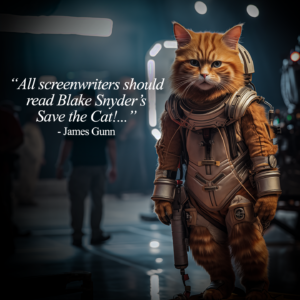
Our guest blogger, Matt Allen, has been a working screenwriter since 1999 when he and his writing partner, Caleb Wilson, sold their first spec script, Manchild, to New Line Cinema. Since then, Allen & Wilson have worked steadily for Universal, Paramount, Warner Brothers, Fox, Lionsgate, and many others. Matt and Caleb are best known for their original Vince Vaughn & Reese Witherspoon comedy, Four Christmases, as well as their adaptation for 2010’s surfing drama, Soul Surfer. Matt is also a founding member of a five-person writing team, The Job Factory, that consists of Caleb Wilson, Josh Cagan, Jon Davis, and Rob McKittrick. The Job Factory is presently in pre-production on a comedy series entitled “Jon Davis Gets a Sex Robot” for Justin Lin’s Youtube channel, YOMYOMF.
If you want to be a working screenwriter, your career depends on being able to work fast. However, there are several aspects of writing scripts that can get you stuck in what I like to call a “Pot of Glue.” These are all the molasses-like pitfalls that can slow you down on your journey to FADE OUT. Today, I’d like to discuss one of the stickiest pots of glue: DIALOGUE
For a lot of us, the biggest waste of time is staring at the blank screen. Once I have actual words down, it’s not hard for me to tinker with them, but I stumble with that first step every time.
When I think of writing dialogue, I recall real-life arguments I’ve had in the past. Inevitably, after every argument, I replay it back in my mind and I think, “Dammit! When Tom said, ‘I’m not a racist asshole!’, I should have said something more clever than, ‘Well that’s your opinion, man.’” I almost never think of the perfect “zinger line” in the moment — and very few of us do. I often wonder how sharp Aaron Sorkin’s retorts are in real life.
For those of us who aren’t witty on our first pass, we need to quickly get the basics of a conversation down on paper so we can sharpen it later. If we know we’re going to rewrite it later, what should “first-draft” dialogue strive to achieve?
John August’s first rule of writing dialogue is: “Listen to how ACTUAL PEOPLE TALK.” It’s great advice. John is saying don’t try and copy movie dialogue, but rather try and get real-life words on the page.
So, how do you do this fast?
Here’s one technique you won’t find in the screenplay books:
Pick a friend that you trust, and have them play one of the characters in your scene. Tell them the situation their character is in and what their character is trying to achieve. Then use “instant message” software on your computer or even the text function on your phone and role play those characters. You’ll be amazed how quickly you can amass pages and pages of dialogue.
Before long, you’ll have more dialogue than you’ll know what to do with, and you’ll be able to cut and paste it into whatever screenwriting software you use. A five-minute text exchange with a friend could easily yield a few pages of rough-draft dialogue. Now, I’m not saying you’ll always get lines you can use, but it creates a great jumping off point, and gives you time to work on all of the other aspects that shape great dialogue — including those all-important Aaron Sorkin zingers!
Matt Allen
Collaborating with major studios like Paramount, he penned the heartwarming film Mighty Oak (2019) and co-wrote the hilarious comedy Block Party (2022) with writing partner Krista Suh. A member of the Writers Guild of America (WGA) for over 20 years, Matt's deep expertise in screenwriting has been honed to be sharp as a tac.
Diving into the future of storytelling, Matt is pioneering as a prompt engineer, where he utilizes artificial intelligence to elevate the creative writing process. This innovative endeavor amplifies his ongoing commitment to merging technology and artistry.
Beyond his writing exploits, Matt is also a seasoned producer, bringing stories to life in films like 2021’s Run & Gun and the aforementioned Block Party. His deep understanding of the entertainment business was further enriched during his tenure as a talent agent at ICM (now CAA), offering him invaluable insights into Hollywood's inner workings.
As Matt continues to break new ground in storytelling, his unwavering passion for his craft, combined with a keen eye for industry trends, keeps him at the forefront of innovation.
8 Comments
Leave a Reply Cancel reply
You must be logged in to post a comment.









OOO! That’s a great idea! I have a best friend that I usually replay, “What I SHOULD have said is…” dialogues with and now I can do that and help my career at the same time. Instead of just rehashing sad relationships…
Awesome tip. Thank you. I always remember reading the pitch for Four Christmases and use it as an example of a clean and clear big idea.
Rock!
Thanks for taking the time to help us who are still struggling for The finish line. I am still a learner, but what makes my dialog better than it was before is that I get rid of it all together every place I can.
SHOW INSTEAD OF TELL. I’m serious, after I write a sequence, I go back through with this thought in mind. Is there anything here I can show with a nod or a gesture and get rid of the dialog. Like, “My name is Heavy”. Get Heavy a name tag.
I’m goin going to try it again.
.~~~
{^b^}
.(O) BOO!
Again?
..~~~
{^b^}
..(O) BOO! WHO!
Matt, thanks for the great tip! I’d never heard of this technique before, but it makes perfect sense. What a great way to get a jump-start on the dialogue of a scene.
Brilliant! Been a longtime fan of STC and this is a GREAT tip. I was finally hired, for the first time, to officially WRITE an animated movie I get to direct so thanks for another great tool. I was attached to Four Christmases for awhile, really wished I could’ve been part of it longer. Thanks for sharing!
Great tip! I usually think of dialogue as a boxing match between the characters, giving them good lines that can be delivered as one- twos.
Also I try not only to have them punch hardest each time, but to get a new pair of bigger gloves each time they head back for the fight.
This way, when I come up with not-so-hard dialogue puns at the end of a scene, I move them to the beginning, so it is always a ‘less to more intensity’ approach.
Hope it is useful!!